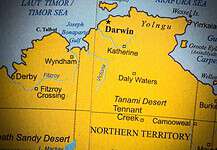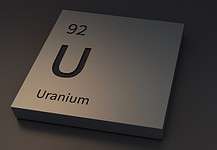NORMALLY I discuss stocks directly related to mining in this column. In this edition, however, I am taking a departure to discuss one of our favourite shares on the market: Telstra. My interest in Telstra began last year when it was being proverbially pounded by the stock market, media and analysts. The Future Fund was selling the stock down, confusion reigned over the NBN Co (National Broadband Network) and the share price sunk to a shocking low of $2.57.
Behind the scenes, Telstra was quietly turning the business around. Quite simply, customers hated dealing with Telstra and were leaving in droves; as analysts and customers, it seemed so logical that ‘all’ the company needed to do was improve customer service and its pricing. But what Telstra had, and still has, is superior telephone coverage – it offers the best coverage by a mile, and no amount of ‘Telstra bashing’ could change that. We have been recommending Telstra as a buy for some time, on the belief that the company is addressing the key issues of customer service and pricing and the knowledge that it is now being run by the capable hands of chief executive officer David Thodey. Most importantly, we believe it is a buy because it now offers what every good investor wants: astonishing value. We believe the situation with Telstra was very similar to the turnaround of Coles: Coles had a great brand name and great distribution yet was badly managed for years; you didn’t need to be a stock market wizard to see their problem – there wasn’t enough stock on the shelves! Mr Thodey recently held an investor presentation which put a rocket behind
the Telstra share price. The key points from the presentation were: a policy of no share buy-backs for the time being; a $0.28 dividend to be maintained for the 2012 and 2013 financial years; and a goal for the board to increase dividends in financial year 2014 and beyond.
The rollout of the National Broadband Network is incredibly complex, and while analysts forecast precise revenue and earnings for many years into the future, the blunt reality is that it’s impossible to do so for an entity like NBN Co. That’s not even considering what could happen if there is a change of government! Telstra, perhaps not surprisingly, forecast that trade-off between the loss of revenue from the copper network and the NBN Co payments due in the next few years would balance each other out. Naturally these forecasts could prove to be hopelessly wrong – for better or worse – however the thinking is that free cash will actually be about $1 billion in the next two to three years. Given that historically its dividend has been so large, Telstra has minimal franking credits, so before it can entertain a larger dividend it will need to build up cash and franking derived from retained profits. Telstra decided against an on-market buy-back as it would not have a material impact on the share price – which makes sense given the current market capitalisation of $42.1 billion versus a $1 billion or so buy-back. Some concern has been voiced from smaller players about Telstra’s gargantuan status, and in particular the reach it has with Foxtel’s purchase of Austar and the bundling opportunities it gives to the company.
The ACCC will always be a threat to the company, but the reality is that if Telstra can provide an excellent service – which may be a simple bundled product of Foxtel, internet and telephone – then it stands to gain further market share. What’s really impressive about the ‘new’ Telstra is the diplomatic route taken by Mr Thodey – a genuine commitment to improving customer service and a sharp focus on financial management. If the company can continue that focus, it has a great future.
RIVKIN REPORT







































